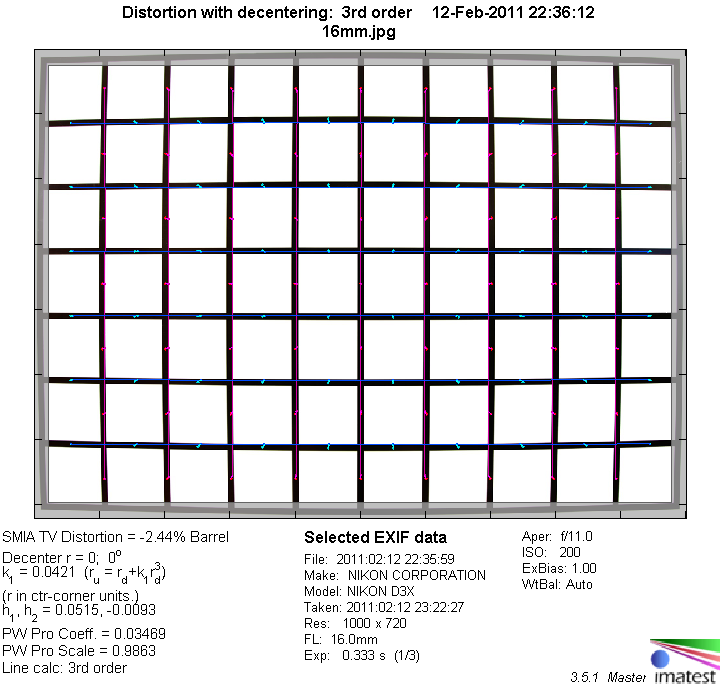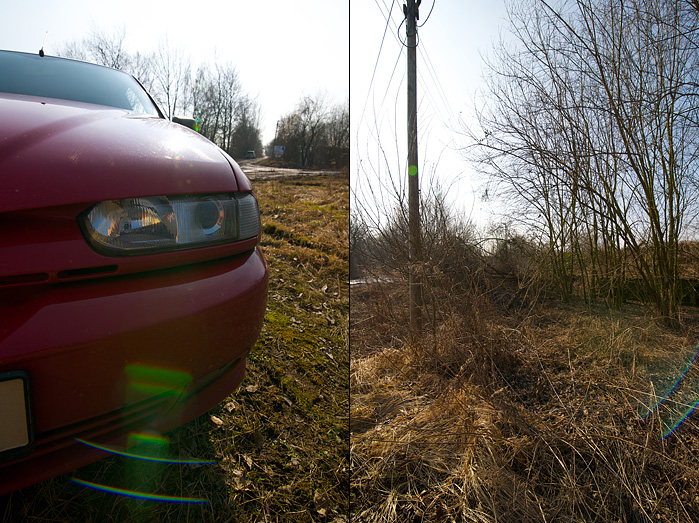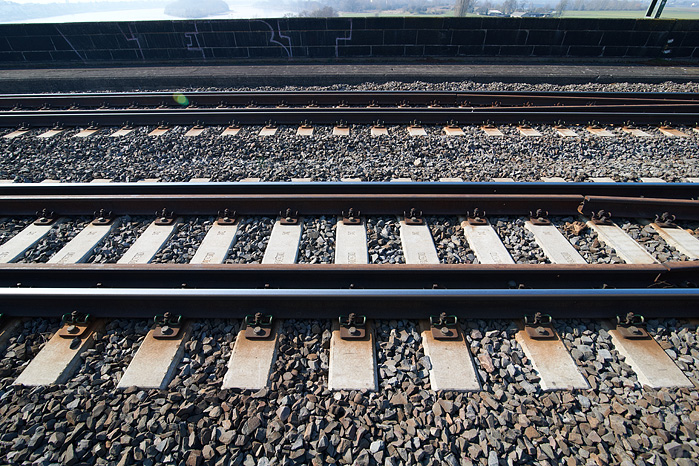|
Page 2 of 3

Distortion
Ultra wide angle lenses usually show a considerable amount of barrel distortion but the Tokina has comparatively few problems here. There is, of course, some moderate to heavy barrel distortion at 16mm but we've seen a lot worse. The issue has eased significantly at 20mm already and there isn't really anything to complain anymore at 24mm and 28mm. The characteristic is slightly wavy at the longer focal lengths though so the remaining traces are not that easy to correct (if necessary anyway).
|
Move the mouse cursor over the focal length text marks below to observe the respective distortion
|
| 16mm |
20mm |
24mm |
28mm |
|

|
The chart above has a real-world size of about 120x80cm.
Vignetting
The Tokina lens shows only a very moderate light falloff especially considering its focal length and aperture class. There's naturally some vignetting at 16mm @ f/2.8 but at around 1.6EV it isn't any worse than for example the Nikkor AF-S 14-24 at its short end. The falloff is slightly better at the other focal lengths at max. aperture and not really a problem anymore when stopping down to f/5.6 at 16mm and f/4 at the other focal lengths. This is quite an achievement for such a lens.
We're performing our vignetting analysis based on
(uncorrected) JPEGs straight from the camera. The JPG engine of the Nikon D3x features a rather flat
gradation curve, thus has a moderate contrast characteristic, resulting in comparatively low vignetting figures - the
corresponding Canon figures are roughly 40% higher due to the more
aggressive default contrast setting.

MTF (resolution)
The Tokina lens has a mixed resolution characteristic but considering its common real world aperture use it's highly impressive nonetheless. The weakness of the lens is the corner performance at max. aperture. The center quality is already very high and the borders are also good but the corners are generally soft here. The corners receive quite a boost at f/4 but they become good to very good from f/5.6 onwards. The center performance is superb straight from f/2.8 at 16mm and 20mm and very good at f/4. Stopping down to f/4 to f/8 results in an excellent center quality throughout the focal length range. The border quality is generally very good in the lower range at all settings with a peak around f/5.6. The sweet spot of the lens is around 20mm. Field curvature is not a big issue.
This may sound quite enthusiastic actually but we've to note that we've purchased a total of three samples for testing - two for Nikon and one for Canon EF mount. All three showed fairly significant centering issues towards the 28mm setting. The initial Nikon variant was below testing quality and we had to return all three actually. A "golden sample" will perform better at the longer focal lengths. However, there's a limit to how many samples we're willing to test here to get one.
Please note that the MTF results are not directly comparable across the different systems!
Below is a simplified summary of the formal findings. The chart shows line widths
per picture height (LW/PH) which can be taken as a measure for sharpness.
If you want to know more about the MTF50 figures you may check out the corresponding
Imatest Explanations

Chromatic Aberrations (CAs)
Chromatic aberrations (color shadows at harsh contrast transitions) are moderate at ~2px on the average at the image borders at f/2.8 and around 1.5px at medium aperture settings . This is, again, pretty good for an ultra wide-angle lens although the problem may be visible at times. It is, of course, possible to correct lateral CAs in most modern RAW converters. Many modern Nikon DSLRs already do this for you in-camera if you shoot JPG.

Flare
Any lens trying to compete against the Nikkor 14-24 will have a hard time to beat it in terms of sharpness. The Nikon lens has one issue though that spoils the party for many users: flare. Thus it make sense to have a closer look at how the Tokina lens behaves in this regard.
Let's start with heavy backlight images. Almost any wide angle lens would struggle with the sun just outside the image, so it's no surprise the Tokina shows quite some flare spots and coloured shapes on the image border opposite to the source of light. See the samples below, which where shot with an FX camera. These are web-sized full images, not crops.

Things look a lot better with the sun coming from a larger angle. You may occasionally still run into some flare spots, as the railway shot below illustrates (which is also available in full resolution on the next page). However, in summary flare is a lot less of an issue than it is with the Nikon 14-24.

|